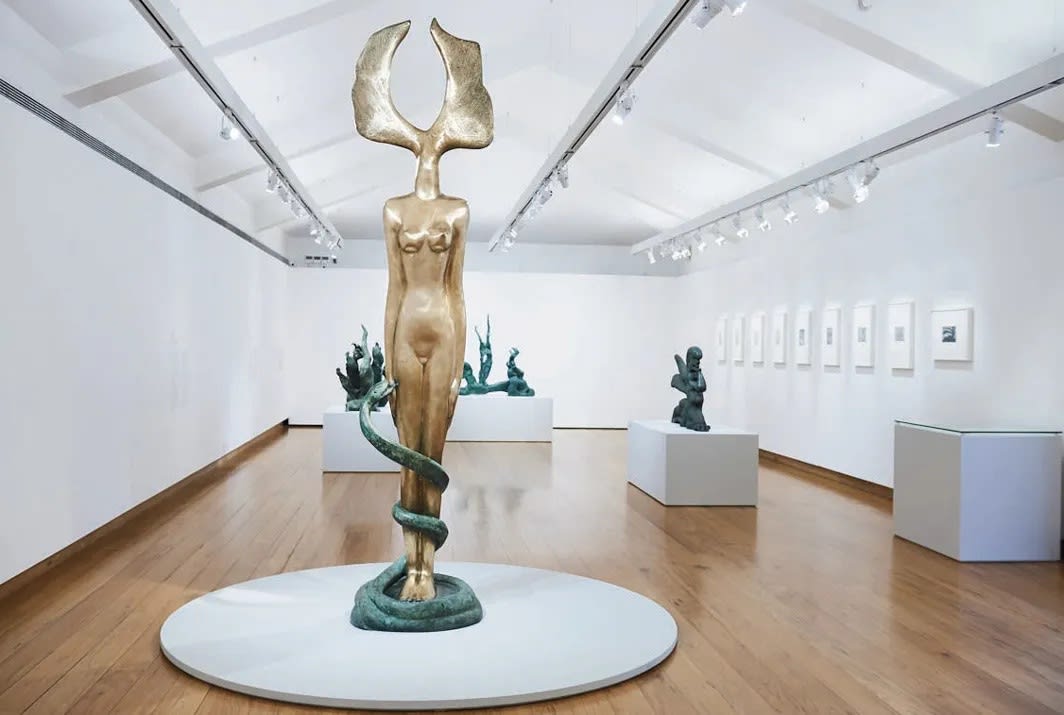Born in Brazil, Maria MARTINS (1894–1973) was an internationally acclaimed sculptor whose work synthesizes Western European, and particularly Surrealist, influences with the rich cultural iconography of the Amazon. Her perpetually nomadic life informed this unique fusion, as she navigated between the intellectual currents of Europe and the myths and legends of her native Brazil—territory rarely explored by her contemporaries.
Martins became a key figure within the expatriate Surrealist community in New York, where she was championed by André Breton and maintained close relationships with leading figures such as Max Ernst, André Masson, and Marcel Duchamp. Her complex personal relationship with Duchamp, which spanned from 1946 to 1968, is well-documented in their extensive correspondence, and she is widely acknowledged as the muse for Duchamp’s final major work, Étant Donnés (1966).
The period Martins spent in the United States was her most prolific, during which her work took an increasingly abstract turn. Her sculptures—often centered on the body, particularly the female form—became progressively more complex and fantastical, merging organic, plant-like shapes with a striking sense of the phantasmagorical. Often imbued with a raw, almost cruel eroticism, these works reflected Martins’ exploration of both spiritual and corporeal themes. Despite the abstract evolution of her forms, the subjects of her work remained deeply rooted in Brazilian folklore, drawing upon the mythology and natural landscape of the Amazon.
Upon her return to Brazil in 1949, her work was met with rejection by the local art establishment, which viewed her non-traditional, erotically charged themes with skepticism. Nevertheless, Martins leveraged her international connections to champion modern art in Brazil, leaving a lasting impact on the country’s artistic landscape until her death.
 "/>
"/>

